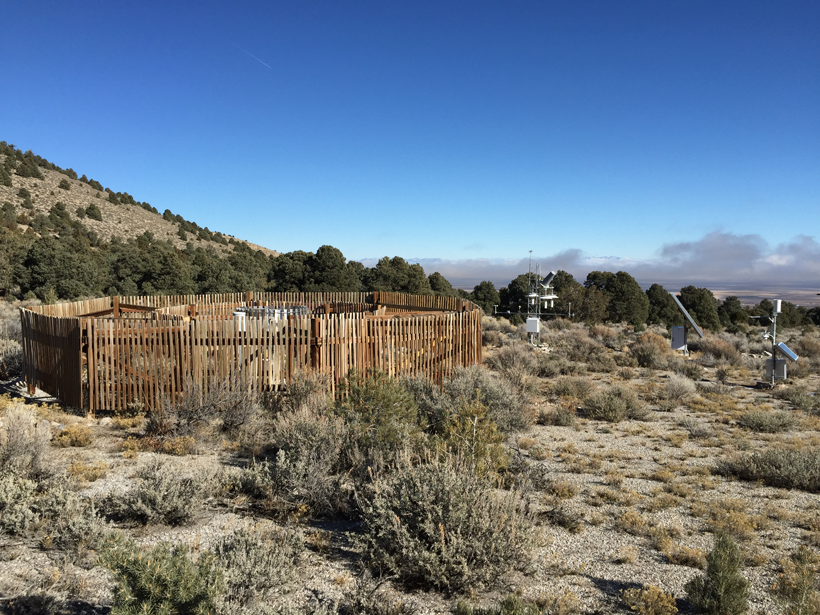Amateur and professional meteorologists have been documenting atmospheric activity for centuries. These records are valuable tools for assessing climate change, but enthusiasm is not always coupled with consistency: Poorly documented changes in observing protocols, instrumentation, and measurement locations frustrate scientists. In a field where a shift in average temperature of only a couple of degrees can cause potentially irreversible ecological changes, inconsistent measurements pose a massive problem.
“For most data, we’re very grateful if we have a latitude, longitude, and elevation. Anything more is a bonus.”
“For most data, we’re very grateful if we have a latitude, longitude, and elevation,” said climate scientist Peter Thorne of Maynooth University, Ireland. “Anything more is a bonus.”
Thorne aims to change this through a collaboration led by the World Meteorological Organization (WMO). He and others are planning to build a worldwide network of climate monitoring stations that will produce high-quality, consistent records, hopefully for hundreds of years. Although it would be too expensive to replace all climate-observing stations with such sites, the global reference network will give climatologists a set of consistent measurements that they can compare to nearby, less consistent measurements to gain a reliable, long-term view of the global climate.
Thorne and his collaborators proposed the idea in a 2018 paper published in the International Journal of Climatology, and the World Meteorological Organization’s infrastructure committee endorsed it last fall. The authors hope reference stations will become “proverbial islands of truth which you can then use to understand all the weird and wonderful data issues going on around those stations,” Thorne said.
Cohering Multiple Networks
This project follows on the heels of several smaller networks. The U.S. Climate Reference Network (USCRN) consists of more than 100 monitoring stations in remote locations around the United States that have measured temperature, precipitation, soil moisture, and a number of other climate variables since the early 2000s. Similarly, the Global Climate Observing System Reference Upper-Air Network consists of 30 worldwide sites that measure climate variables above Earth’s surface, and Canada runs several hundred reference climate stations.
These projects are in line with the long-standing mission of the WMO’s Centennial Observing Stations: “sustainable observational standards and best practices that facilitate the generation of high-quality time series data.” Scientists associated with the Centennial Observing Stations have kept meticulously consistent climate records for more than a hundred years. Blue Hill Observatory in Milton, Mass., for example, has used the same mercury barometer since 1888 in an effort to maintain consistency.
Zeke Hausfather of The Breakthrough Institute and the Berkeley Earth project helped conceptualize the new global reference network. He said that Centennial Observing Stations are “a gift to modern scientists,” and newer networks build on their work.
The first sites in the new global monitoring system will be existing sites that have long provided high-quality data, like sites from USCRN and, possibly, Centennial Observing Stations. The sites won’t necessarily all use the same equipment, but they’ll all share the mindset that climate data are most useful when changes to collection methods are infrequent and, when they must occur, are rigorously documented.
Scaling Up
Because most established climate monitoring sites are in the Northern Hemisphere, the new reference network will initially be skewed toward one half of the globe. Thorne hopes the network will become truly global within 5–10 years, however, with at least 180 well-spaced stations around the world.
Roísín Commane, an atmospheric scientist at Columbia University who is not involved in setting up the new network, said that cross-cultural communication can be a challenge when Americans and Europeans set up monitoring systems in developing regions. “How do we make sure that things like this are a source of pride for the local community?” she asked.
Commane said a global monitoring system is well worth developing, however, as it will have “massive potential” to increase our understanding of the climate.
Thorne agrees that the scale of the project makes it challenging but added, “if we don’t push ourselves, if we don’t push the observing system, we won’t realize the benefits of what we could observe.”
—Saima Sidik (@saimamaysidik), Science Writer
Citation:
Sidik, S. (2021), A global monitoring system could change the future of climatology, Eos, 102, https://doi.org/10.1029/2021EO156414. Published on 26 March 2021.
Text © 2021. The authors. CC BY-NC-ND 3.0
Except where otherwise noted, images are subject to copyright. Any reuse without express permission from the copyright owner is prohibited.

